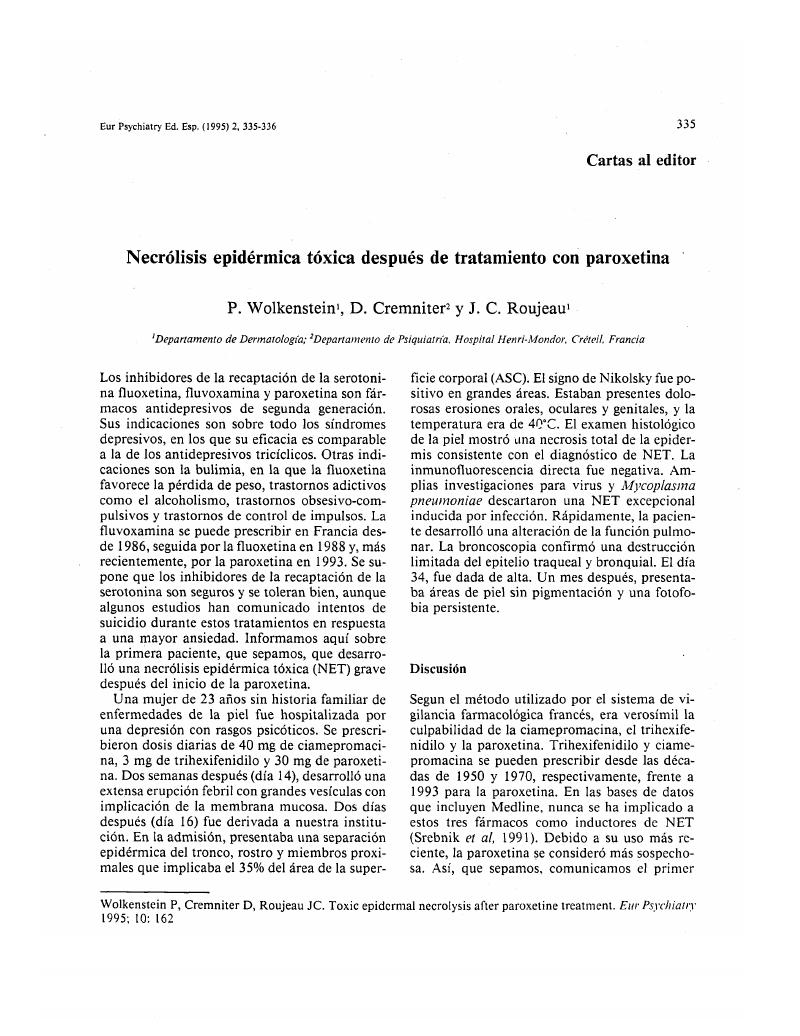No CrossRef data available.
Article contents
Necrólisis epidérmica tóxica después de tratamiento con paroxetina
Published online by Cambridge University Press: 12 May 2020
Abstract
An abstract is not available for this content so a preview has been provided. As you have access to this content, a full PDF is available via the ‘Save PDF’ action button.

- Type
- Cartas al editor
- Information
- Copyright
- Copyright © European Psychiatric Association 1995
References
Bodokh, ILacour, PhRosenthal, Eet al.Syndrome de Lyell ou nécrolyse epidermique toxique et syndrome de Stevens-Johnson après traitement par fluoxetine. Thérapie 1992; 47: 441.Google Scholar
Freeman, CPFluvoxamine: clinical triais and clinical use. J Psychiatr Neurosci 1991, 16: 19-25.Google Scholar
Menard, GAllain, HBeneton, CN’Guyen, JMEnquête épidémiologique sur la prescription d’antidepresseurs. Psychol Med 1992; 24: 1550–4.Google Scholar
Srebrnik, AHes, JPBrenner, SAdverse cutaneous reactions to psychotropic drugs. Acta Derm Ven (Stockh) 1991; 71 (suppl 158): 3-12.Google Scholar
Wagner, WPlekkenpol, BGray, TEVlaskamp, HEssers, HReview of fluvoxamine safety database. Drugs 1992; 43 (suppl 2): 48–54.CrossRefGoogle ScholarPubMed
Wolkenstein, PRevuz, JDieh, JLLangeron, ORoupie, EMachet, LToxic epidermal necrolysis after fluvoxamine. Lancet 1993; 31: 304–5.CrossRefGoogle Scholar




